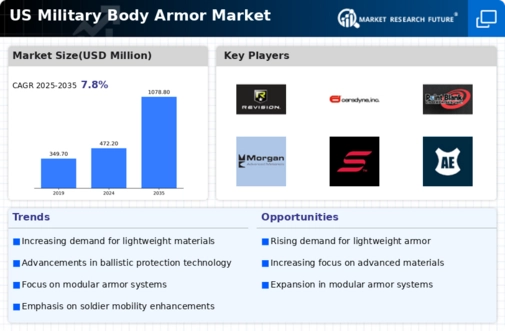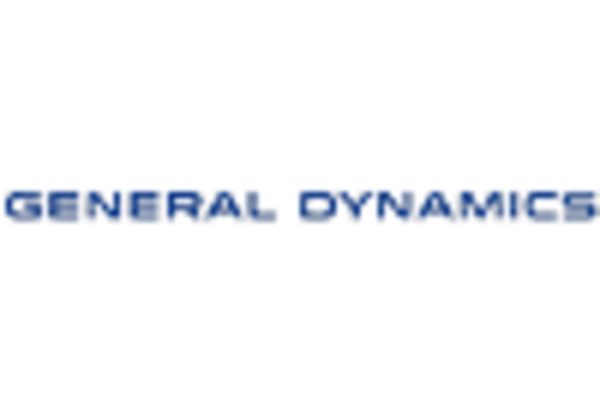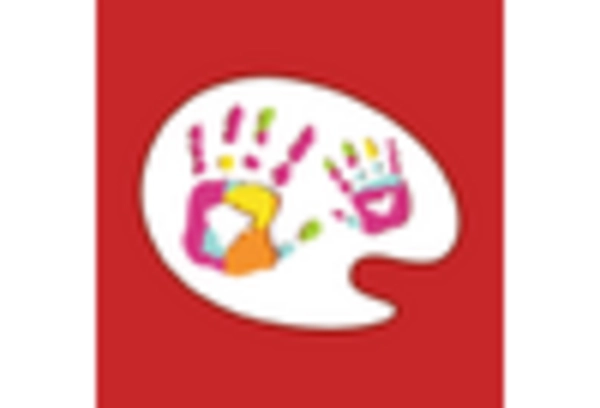Rising Defense Budgets
this market is experiencing growth due to increasing defense budgets across various branches of the armed forces.. In recent years, the U.S. government has allocated substantial funds to enhance military capabilities, with defense spending projected to reach approximately $800 billion in 2025. This financial commitment is likely to bolster procurement of advanced body armor systems, ensuring that personnel are equipped with the latest protective gear. As threats evolve, the demand for innovative solutions in the military body-armor market is expected to rise, driving manufacturers to develop more effective and lightweight materials. Consequently, the focus on enhancing soldier survivability is a key driver in this market.
Emerging Threats and Geopolitical Tensions
this market is significantly influenced by emerging threats and geopolitical tensions.. As global conflicts and regional instability persist, the need for enhanced personal protection for military personnel becomes paramount. The U.S. military is increasingly focused on countering asymmetric warfare and unconventional threats, which necessitates the development of advanced body armor solutions. This environment creates a pressing demand for innovative materials and designs that can withstand various ballistic and environmental challenges. The military body-armor market is thus positioned to grow as defense agencies prioritize equipping their forces with superior protective gear to address these evolving threats.
Technological Integration in Defense Systems
The integration of advanced technologies into defense systems is a crucial driver for the military body-armor market. Innovations such as smart textiles, integrated sensors, and augmented reality are being incorporated into body armor designs, enhancing situational awareness and protection. For instance, the use of nanotechnology in armor materials can improve strength while reducing weight, which is vital for operational efficiency. As the military seeks to modernize its equipment, the demand for technologically advanced body armor is likely to increase. This trend indicates a shift towards multifunctional gear that not only provides protection but also enhances the overall effectiveness of military operations.
Regulatory Standards and Compliance Requirements
Regulatory standards and compliance requirements play a significant role in shaping the military body-armor market. The U.S. Department of Defense has established stringent guidelines for body armor performance, necessitating that manufacturers adhere to specific testing and certification processes. These regulations ensure that the armor meets the necessary ballistic protection levels and durability standards. As compliance becomes increasingly critical, manufacturers are compelled to invest in research and development to meet these requirements. This focus on regulatory adherence is likely to drive innovation within the military body-armor market, as companies strive to produce compliant products that offer superior protection.
Increased Focus on Soldier Health and Performance
this market is also driven by an increased focus on soldier health and performance.. There is a growing recognition of the physical and psychological toll that heavy armor can impose on personnel. As a result, manufacturers are exploring lightweight materials and ergonomic designs that enhance mobility without compromising protection. This shift is supported by research indicating that improved body armor can lead to better performance in the field. this market is thus evolving to prioritize not only safety but also the overall well-being of soldiers., which is likely to influence future procurement strategies.

















Leave a Comment